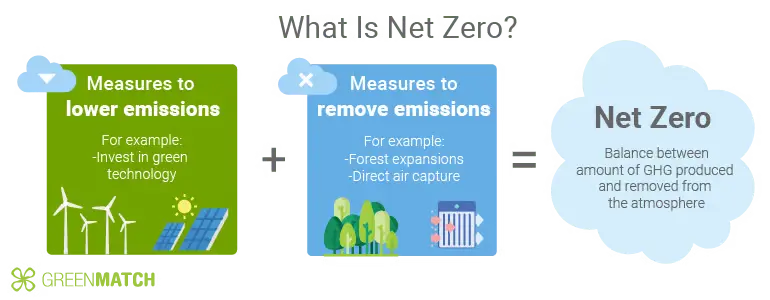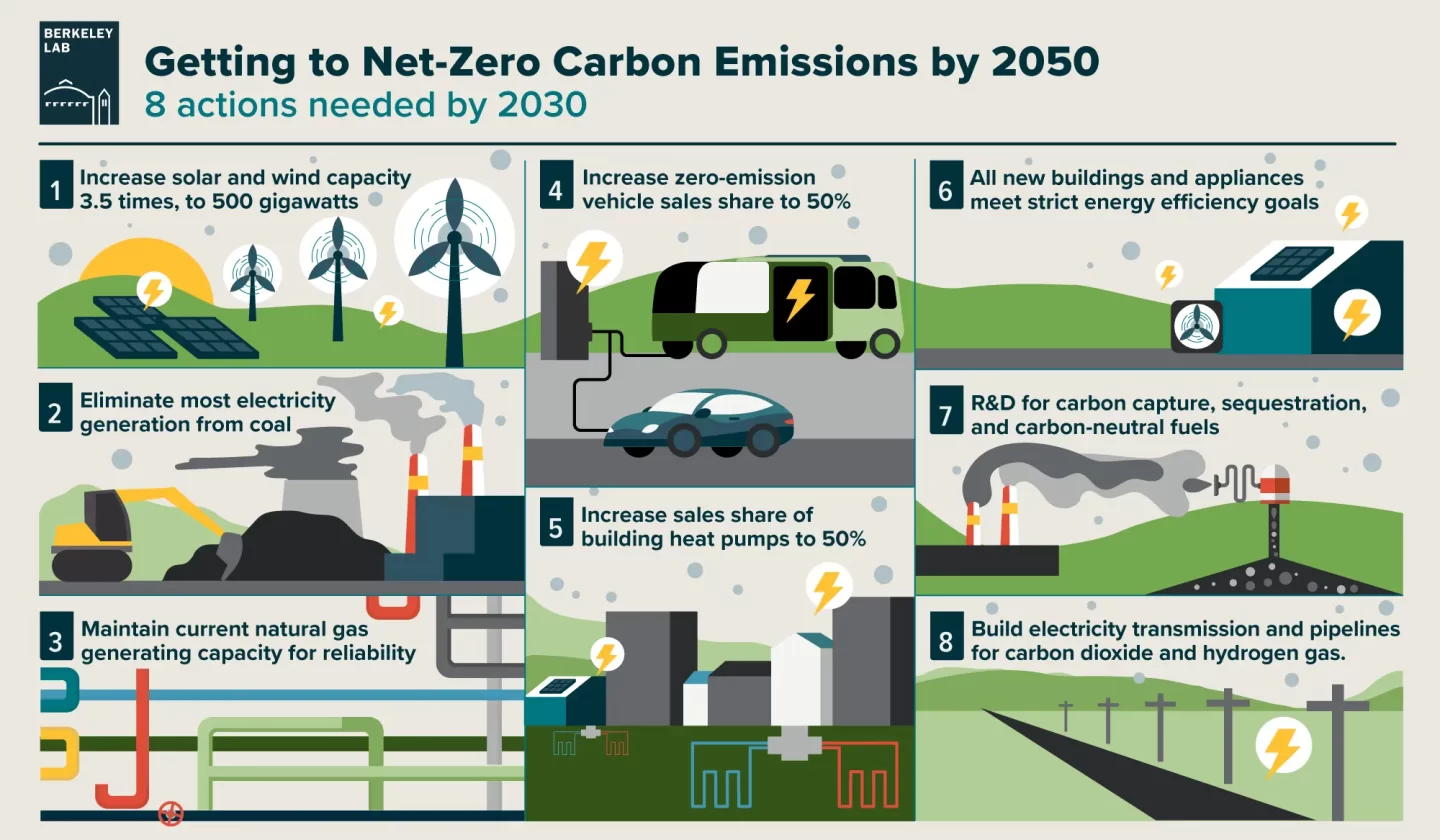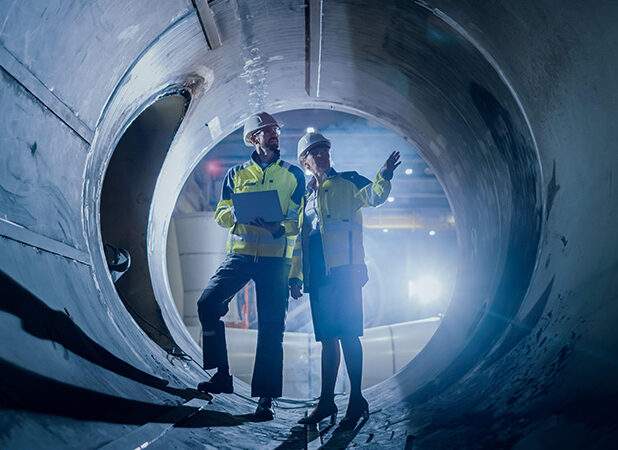Introduction
Zero emission, a term that reflects the aspirations for a greener future, refers to the absence or minimization of harmful greenhouse gas emissions and pollutants associated with a particular activity, process or technology. In the energy sector, achieving zero emissions is an ultimate goal that serves as a cornerstone for mitigating climate change and transitioning to cleaner, more sustainable energy sources.
Why ‘Zero Emission’?
Zero Emission represents a dedication to environmental responsibility, aiming to eliminate or significantly reduce the negative impact of human activities on the planet. In the energy sector, this commitment is demonstrated through the implementation of practices and technologies that aim to eliminate or offset the emissions generated during the production and consumption of energy.

What is net zero emission? Simplified. Source.
Pursuing zero emission in the energy sector
Renewable energy adoption
One key strategy for achieving zero emissions is to transition to renewable energy sources. Renewable sources, such as the sun, wind, and water, eliminate the release of harmful pollutants associated with traditional fossil fuel-based energy production. This shift is crucial in creating a sustainable and environmentally friendly energy landscape.
Energy efficiency improvement
Zero emission objectives also include improving energy efficiency in various sectors. Optimizing processes and technologies to use less energy while maintaining or enhancing performance helps minimize the overall environmental footprint. Energy efficiency measures significantly contribute to the broader goal of achieving zero emissions in the energy sector.

There are many initiatives in place that seek to pursue net-zero carbon emissions. Some of the ways to help towards this goal are above. Source.
Technologies for zero emission
Carbon Capture and Storage (CCS)
In the pursuit of achieving zero emissions, Carbon Capture and Storage (CCS) technologies have become increasingly important. CCS involves capturing carbon dioxide (CO2) emissions produced from the use of fossil fuels in electricity generation and industrial processes. The captured CO2 is then transported and securely stored underground, preventing its release into the atmosphere.
Advantages of Zero Emission in the Energy Sector
Mitigating Climate Change
Achieving zero emissions in the energy sector plays a crucial role in mitigating climate change. By minimizing or eliminating greenhouse gas emissions, the energy industry contributes to reducing the overall impact of human activities on the climate.
Transition to Sustainable Energy Sources
The pursuit of zero emissions drives the transition to sustainable energy sources. This not only addresses environmental concerns but also ensures a secure and resilient energy supply for future generations.
Conclusion
In conclusion, Zero Emission represents the energy sector’s dedication to environmental responsibility and sustainability. Achieving zero emissions requires adopting renewable energy, enhancing energy efficiency, and implementing technologies like Carbon Capture and Storage. As the energy industry progresses, the pursuit of zero emissions remains a guiding principle, leading to a greener and more sustainable future.
Frequently asked questions
Why is achieving zero emissions a crucial goal in the energy sector?
Achieving zero emissions in the energy sector is a crucial goal because it serves as a cornerstone for mitigating climate change and transitioning to cleaner, more sustainable energy sources. This commitment is essential in addressing environmental challenges and fostering a greener future for the planet.
How does the adoption of renewable energy contribute to achieving zero emissions?
Transitioning to renewable energy sources, such as the sun, wind, and water, is a key strategy for achieving zero emissions. These sources eliminate the release of harmful pollutants associated with traditional fossil fuel-based energy production, contributing to the creation of a sustainable and environmentally friendly energy landscape.
What role does Carbon Capture and Storage (CCS) play in the pursuit of zero emissions?
CCS involves capturing carbon dioxide (CO2) emissions produced from the use of fossil fuels in electricity generation and industrial processes. The captured CO2 is then securely stored underground, preventing its release into the atmosphere and contributing to the reduction of greenhouse gas emissions.







